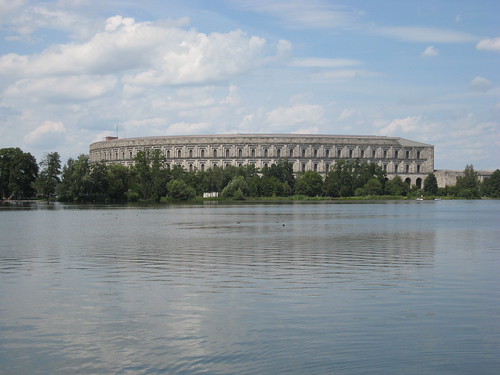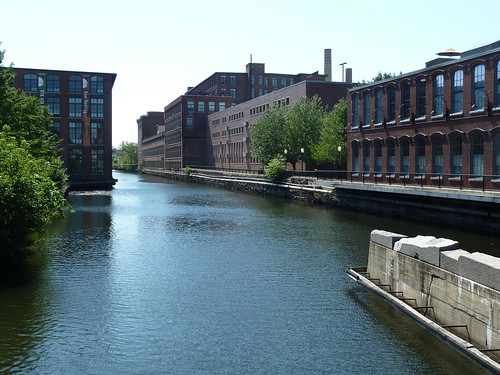Memorials vs Museums
Sunday’s New York Times has a very interesting article about the difficulties faced in establishing a Sept 11 Museum in New York City. While it sounds like the museum commission has been totally inclusive in soliciting opinions from all involved, emotions are still too raw and still too diverse to gain consensus. The story almost incidentally describes the inevitable conflict that exists between memorializing someone or something and providing an accurate historical account of what happened. The two are hardly ever the same and are often at odds with each other.
An example of this phenomenon in the Sept 11 Museum story is how are the hijackers to be depicted. To many family members, the site of the museum – the place where the World Trade Center once stood – is sacred ground and that any mention of, let alone display of photographs of, the hijackers would desecrate the site. On the other hand, to tell the story of what happened, how can you not talk about the men who caused it all? (In an attempt to compromise, the museum will display thumbnail size photos of the 19 terrorists in a small alcove that a visitor must purposefully enter so that no one inadvertently comes upon the photos).
This conflict between memory and historic accuracy is certainly not unique to the Sept 11 Museum. In the early 1980s while in the US Army, I was assigned to Merrill Barracks in Nurnberg, Germany. During World War Two, this army outpost was home to an SS unit that handled all of the ceremonial duties at the adjacent Kongressehalle (pictured below). To put it in some very rough historical perspective, the Congress Hall was meant to be to the Nazis in the 1930s what Independence Hall was to Americans. But in the 1980s – 35 years after the war had ended – it was a walled up old relic whose only relevance seemed to be the turnaround point on our morning runs. And while Merrill Barracks was a fully functioning US Army base, it’s exterior brick walls were still pock-marked from the 1945 battle for Nurnberg between an earlier generation of US soldiers and the remnants of the Nazi regime. At the time I was told that German law forbade the repair or alteration of any battle damage that remained from the war. I don’t know how true that was but no one ever attempted to fix any of it. I also know that none of the Germans I came into contact ever mentioned the war (aside from the occasional 60-something male in a beer tent who after a few liters would start spouting some scary stuff).
Fast forward to 2007 when we made a family trip to Germany. By then – 62 years after the end of the war – the Konressehalle had been transformed into a world class museum that had a full, impartial, and not the least bit sugar coated treatment of Nazism, the Holocaust, and World War Two. Similar museums had also sprung up in Munich and Berchtesgaden where there had in 1980 been only untended relics. Perhaps it took the passage of the generation that lived through the events to enable the country to accurately depict those events in a museum.
As with most things, we can loop this “memory vs history” conflict back to Lowell. I think it was in the early 1970s that City Councilor Paul Tsongas proposed that the canals of Lowell be paved over to improve the city’s vehicular transportation system. When preservationists protested, another councilor, undoubtedly the descendent of or perhaps even a former worker in one of the mills that had been powered by those canals – was said to reply that “there’s nothing to be proud of in those canals.” Today, we view those canals as central to the city’s identity and not as a symbol of our economic and employment oppression.
I guess the moral of the story is that when it comes to building a memorial, do it sooner rather than later but when it comes to building a museum, the more time that passes the better.


Granted it’s obviously not built on the site of a concentration camp, but I think the United States Holocaust Memorial in DC does a good job balancing the memorial/museum equation.
I’m embarrassed to admit that despite visiting DC a number of times, I’ve not made it past the foyer of the Holocaust Museum. From everything that I’ve heard it is an excellent museum and I’ll certainly have to make it #1 on a future itinerary.
I think the fact that it isn’t built on the site of a concentration camp is important. The place where a tragic event occurred is more properly devoted to the memorializing. The cold, hard, stuff-we-don’t-want-to-hear historical analysis of a museum might be better done in another location.
When you do get there I would recommend making it basically the only item on your agenda between lunch and supper, partly because it can take four hours to tour thoroughly, and partly because it is so emotionally intense you are likely to not feel like doing anything else right afterward.
One link: memory, history, and imagination…
On Visiting the Andover, MA Historical Museum
In an Army green uniform
He stood there headless
About to light a Lucky Strike,
Without hands to tap
His embossed cigarette case.
The radio was playing a welcome home waltz.
The ladies were poised, ready to dance,
Dressed in low bodices: saffron,
Pale greens, light blues, and pinks.
Hems of charming dresses brushed the floor.
Elbow length evening gloves were enticing.
Ladies smoked cigarettes with a nimbus
Of clouds mushroomed around their shoulders.
Hiroshima flowers in Japanese vases
Hadn’t yet floated in. The Army officer snaps
At attention to the music, his space was filled
With some landing in France, perhaps Normandy.
Hearing the sound of the waves, he stiffens
At the sun-splashed bayonets, the odor
Of fecal matter. A lovely lady bemuses him,
An elegant image on an empty whiskey glass.
The glass turns slowly like a lost mind.
He smiles at the naked figure as limbs
Fly around this chic celebration
Like pieces of shrapnel slicing
Through this New Year’s Eve party.
At midnight, thin women in black dresses
Reach for the dials on the squat RCA radios.
Music grows sonorous, as the chambers
Of their skulls begin to glow.
–Daniel Patrick Murphy
Interesting connections here. Thanks for sharing the 9/11 story. I heard Alice Greenwald speak last Fall at a conference at UMass Amherst. Their plans for the museum look very interesting. I was disappointed to find out recently that they may not be opening this September as planned because of money. In my first class in the Public History program at UMass Boston we discussed a lot about memorials, memory and museums. I highly recommend reading anything by Edward Linenthal. He came as a guest speaker to our class as well. He has written a lot about the Oklahoma bombing site, Pearl Harbor and other sites that are significant to America’s history and memory.